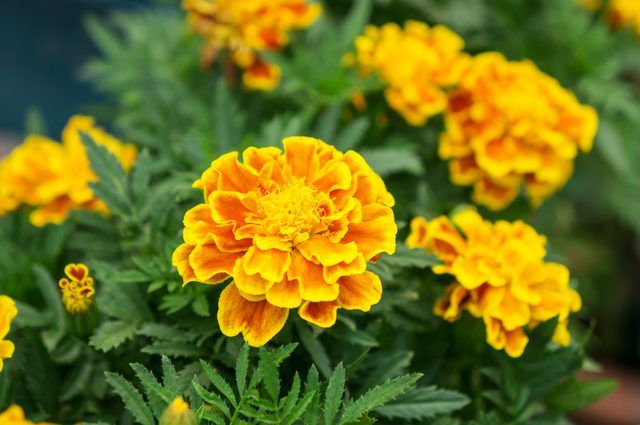Bulbs
Flower Basics
Flower Beds & Specialty Gardens
Flower Garden
Garden Furniture
Garden Gnomes
Garden Seeds
Garden Sheds
Garden Statues
Garden Tools & Supplies
Gardening Basics
Green & Organic
Groundcovers & Vines
Growing Annuals
Growing Basil
Growing Beans
Growing Berries
Growing Blueberries
Growing Cactus
Growing Corn
Growing Cotton
Growing Edibles
Growing Flowers
Growing Garlic
Growing Grapes
Growing Grass
Growing Herbs
Growing Jasmine
Growing Mint
Growing Mushrooms
Orchids
Growing Peanuts
Growing Perennials
Growing Plants
Growing Rosemary
Growing Roses
Growing Strawberries
Growing Sunflowers
Growing Thyme
Growing Tomatoes
Growing Tulips
Growing Vegetables
Herb Basics
Herb Garden
Indoor Growing
Landscaping Basics
Landscaping Patios
Landscaping Plants
Landscaping Shrubs
Landscaping Trees
Landscaping Walks & Pathways
Lawn Basics
Lawn Maintenance
Lawn Mowers
Lawn Ornaments
Lawn Planting
Lawn Tools
Outdoor Growing
Overall Landscape Planning
Pests, Weeds & Problems
Plant Basics
Rock Garden
Rose Garden
Shrubs
Soil
Specialty Gardens
Trees
Vegetable Garden
Yard Maintenance
How to Grow Marigolds
Marigolds thrive on neglect and just keep blooming, making them a rewarding flower choice for beginner gardeners.
Sunny, cheerful marigolds (Tagetes spp.) add vibrant color to garden beds and pots all summer long and into fall. They take little effort to grow and make a rewarding starter plant for beginner gardeners, although their needs must be met to ensure vibrant blooming.

Marigold Types & Hardiness
French marigolds (Tagetes petula) and African, or American, marigolds (Tagetes erecta) are the two types you're likely to find at the garden center, and they're grown as bedding plants. Both are treated as annuals, meaning they live for one season and die back with the frost. French and African marigolds are technically tender tropical perennials that will survive the winter in U.S. Department of Agriculture plant hardiness zones 9 through 11.
Growing Conditions
Regardless of type, all marigolds need similar growing conditions, but with slight variations depending on the cultivar and your climate.
Marigolds need at least six hours of full sun each day. Most varieties will tolerate some light partial shade, although they may not bloom as much in shadier spots. One exception is the ‘Snowdrift’ marigold (Tagetes erecta ‘Snowdrift’), which performs best with light midday shade in hotter climates.
Marigolds are not picky about their soil, but they perform best when it is moderately fertile and fast-draining. Avoid growing marigolds in rich soil because excess nutrients cause them to produce more leaves than flowers.
Growing Marigolds in the Garden
Marigolds need little hands-on care when grown in the garden, but they do need the right conditions, preparation and care to reach their potential.
Things You'll Need
Compost
Slow-release 10-10-10 fertilizer
Organic mulch
Step 1
Wait until all frost danger has passed and the soil has warmed to at least 65 degrees Fahrenheit before transplanting marigold outdoors.
Step 2
Weed and till the soil to a depth of 6 inches. Amend sandy or clay-based soil with a 2-inch layer of organic compost to improve its structure, nutrient content and ability to hold moisture.
Step 3
Fertilize sparingly. Marigolds won't bloom well in rich, fertilized soil, but poor soil may need a nutrient boost. Work slow-release, 10-10-10 formula fertilizer into the bed at a rate of 1/4 pound per 25 square feet of area before planting.
Step 4
Space French marigolds 8 to 10 inches apart and larger African or American varieties 10 to 12 inches apart. Plant them at the same depth as they were in their nursery containers.
Step 5
Spread a 1- to 2-inch layer of organic mulch between the plants to keep their roots moist and to suppress weeds. Do not let the mulch touch the base of the stems.
Step 6
Water the marigolds so the soil is damp 6 inches deep if less than 1 inch of rain falls during the week. Let the soil surface dry out between waterings and avoid getting the plants wet when you water, which encourages diseases.
Tip
Plant marigolds between vegetables to keep thrips, whiteflies and root knot nematodes at bay.
Growing Marigolds in Pots
Marigolds grow well in pots, although they need a little extra attention to keep them healthy and blooming.
Things You'll Need
Clay or plastic pots
Soilless potting soil
Water soluble, 10-10-10 fertilizer
Tip
Choose pots that have drainage holes around the base. Plastic or terra
cotta are both fine.
Choose the pot size based on the number of plants and
their mature size: A single French marigold will perform well in a10-inch pot, while three French marigolds need an 18-inch pot or larger,
depending on how dense you wish the planting to be.
Select the best soil. Soilless potting mix works best when growing
marigolds in pots, although any sterile, fast-draining potting soil will
do. Avoid soils labelled "garden soil" or "top soil" because they areunpasteurized and often contain weed seeds.
Step 1
Space the marigolds evenly in the pot to provide enough space for root development, and make sure they are planted at the same level as they were in their original pot. Try planting shorter marigold varieties such as 'Boy O' Boy' (Tagetes patula 'Boy O' Boy') in a triangle pattern around the outside of the pot with a larger type such as 'Safari' (Tagetes erecta 'Safari') in the center.
Step 2
Check the soil daily during hot weather and water if it feels dry just beneath the surface. Potted marigolds dry out faster than their garden-growth friends. Add water until it flows freely from the drainage holes.
Step 3
Fertilize potted marigolds if they are stunted or underperforming. Dissolve 1/4 teaspoon of water-soluble, 15-15-15 formula fertilizer in 1 gallon of water. Replace one watering per month with the fertilizer solution. Stop fertilizing if the marigold starts to producing more leaves than flowers.
Tip
Overwinter potted marigolds indoors in a warm room with a south-facing window, or discard them at the end of the season.